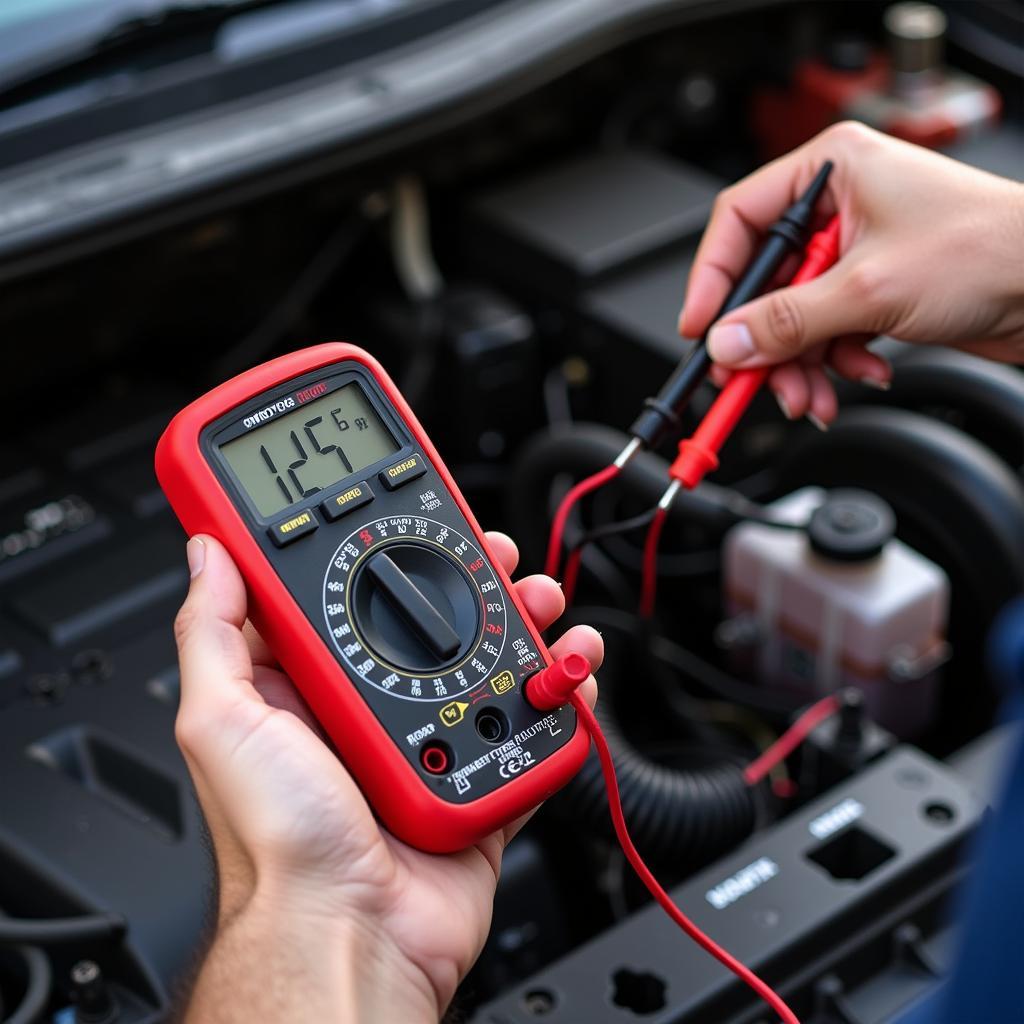The dreaded moment: you turn your car key, and…nothing. Or maybe your car does start, but the battery light on your dashboard remains stubbornly dark. No battery light on dashboard can be a surprisingly tricky issue, signaling anything from a simple loose connection to a more serious electrical fault. This article dives into the potential causes, diagnostic steps, and solutions for this often-overlooked warning sign.
Understanding the Battery Light and Its Absence
The battery light illuminates when your car’s alternator isn’t charging the battery properly. So, a no battery light on dashboard situation means the warning system itself may be malfunctioning. A functioning light assures you that the charging system is working, and when absent, it leaves you in the dark – literally. This can lead to a dead battery and leave you stranded.
Common Causes of No Battery Light on Dashboard
Faulty Alternator
While ironically, a lit battery light often points to a failing alternator, a lack of light can also indicate the same issue. A completely dead alternator can’t even power the warning light.
Blown Fuse
A blown fuse in the circuit that powers the battery light is a simple, yet frequently overlooked cause. Check your car’s owner’s manual to locate the specific fuse.
Wiring Issues
Loose or corroded wiring connections to the alternator or instrument cluster can prevent the light from functioning. These connections can degrade over time, especially in harsh climates.
Instrument Cluster Problems
A malfunctioning instrument cluster can cause various warning lights, including the battery light, to fail. This is less common but can be a more costly repair.
 Alternator connected to car battery
Alternator connected to car battery
Diagnosing the Problem
Visual Inspection
Start by visually inspecting the wiring connections to the alternator and battery. Look for loose, corroded, or damaged wires.
Fuse Check
Use a test light or multimeter to check the relevant fuse. Replace it if necessary. This is a quick and easy check.
Battery Voltage Test
Measure the battery voltage with a multimeter. A fully charged battery should read around 12.6 volts. A lower reading may indicate a charging system problem.
Alternator Output Test
With the engine running, measure the voltage at the battery terminals. It should be around 14 volts. A lower reading suggests a problem with the alternator.
 Testing car battery voltage with a multimeter
Testing car battery voltage with a multimeter
Solutions and Repairs
Replacing the Alternator
If the alternator is faulty, it needs to be replaced. This is a relatively straightforward repair for a mechanic.
Repairing Wiring
Damaged or corroded wiring should be repaired or replaced as necessary. This often involves cleaning contacts or soldering new wires.
Replacing the Fuse
If the fuse is blown, replace it with the correct amperage fuse. This is a cheap and easy fix.
Instrument Cluster Repair/Replacement
If the instrument cluster is the culprit, it may need to be repaired or replaced. This can be a more complex and costly procedure.
What if the Battery Light Flickers?
A flickering battery light is often a sign of a slipping or worn-out alternator belt or a failing voltage regulator within the alternator. Address this quickly to avoid further damage.
Conclusion
No battery light on dashboard isn’t something to ignore. While it might seem less alarming than a brightly lit warning, it can signal serious problems with your car’s electrical system. By understanding the possible causes and following the diagnostic steps outlined in this article, you can address the issue promptly and prevent further damage and costly repairs. Don’t let a dark battery light leave you in the dark – take action today.
FAQ
-
Can I drive with no battery light on the dashboard? Yes, but it’s not recommended. You’re driving without a critical warning system, risking a sudden breakdown.
-
Is this a DIY fix? Some fixes, like replacing a fuse, are simple DIY tasks. However, others, like replacing the alternator, often require a mechanic’s expertise.
-
How much does it cost to fix this problem? The cost depends on the specific issue. A fuse replacement is inexpensive, while an alternator replacement can cost several hundred dollars.
-
How can I prevent this issue in the future? Regular vehicle maintenance, including battery and alternator checks, can help prevent these problems.
-
What if I replace the alternator and the light still doesn’t come on? This suggests another issue, such as a wiring problem or a faulty instrument cluster. Further diagnosis is necessary.
-
Is a no battery light on dashboard always serious? While potentially serious, it could be something as simple as a blown fuse. Proper diagnosis is crucial.
-
What if my car won’t start and there’s no battery light? This likely indicates a dead battery or a serious charging system failure. Jump-starting the car and having it checked by a mechanic is recommended.


